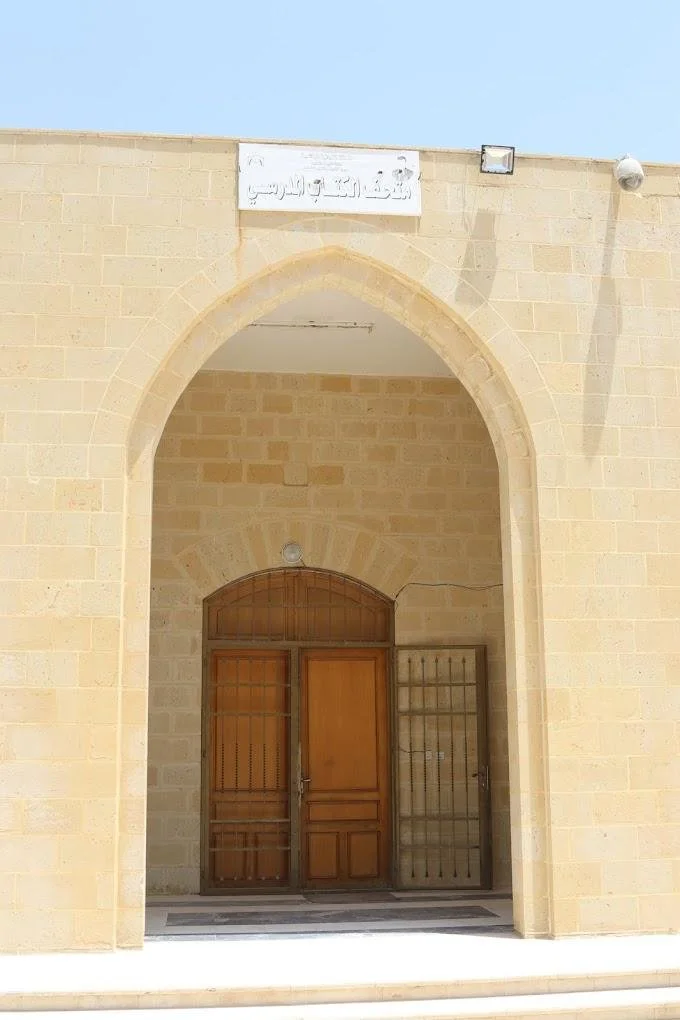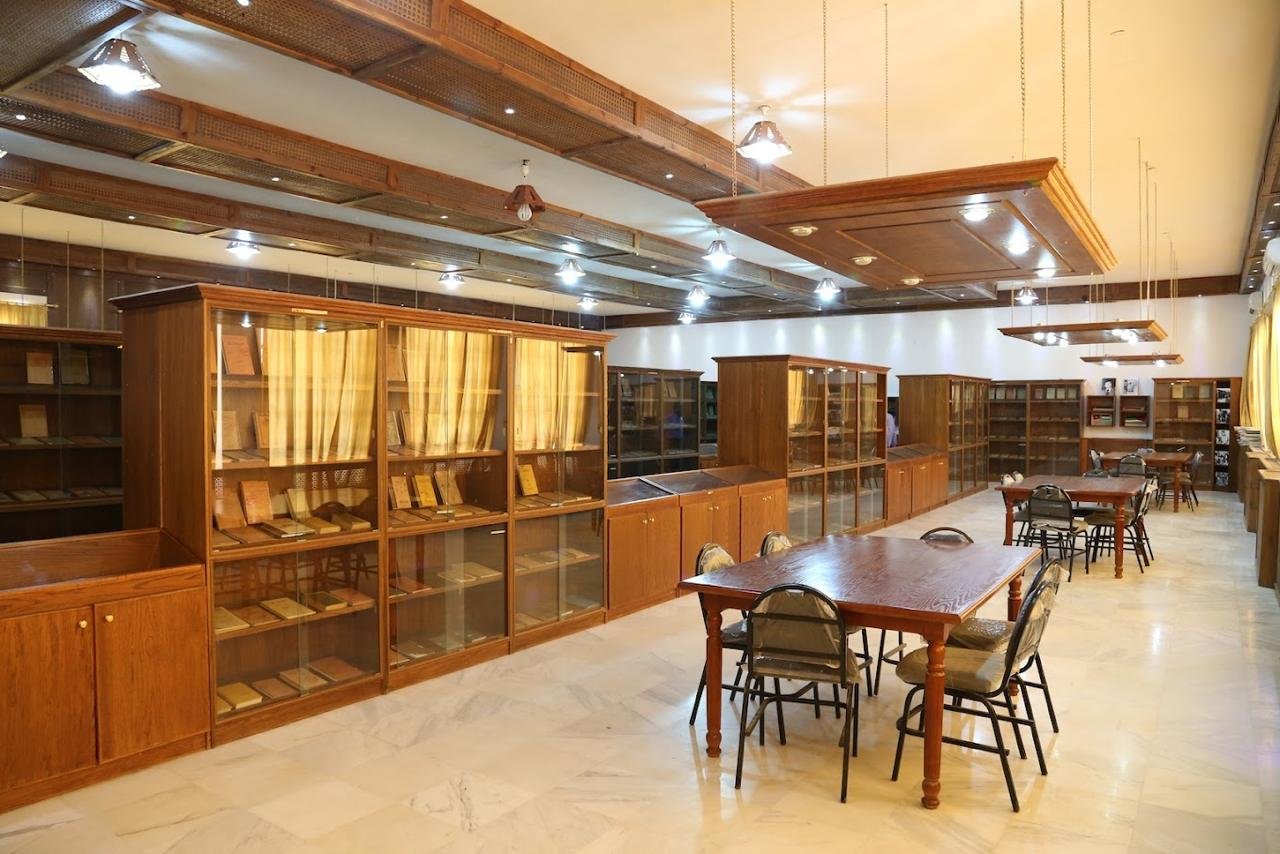THE MUSEUM OF TEXTBOOKS
Written by Hilary Falb Kalisman (2014)
INtroduction
The Museum of Textbooks (Mathaf al-Kitab al-Madrasi) is a unique resource for historians interested in education, not only in Jordan, but also in Palestine, Egypt, Syria and Iraq. The museum is located on the grounds of the secondary school for boys in Salt, approximately twenty miles from Amman and houses textbooks used in Jordan, but written and published throughout the region. These textbooks mainly date from the 1920s through the present but also include a few Ottoman-era works, as well as documents relating to Jordanian education, particularly at the Secondary School for Boys.
The Museum contains a wealth of material relating to government-sponsored education in Jordan, as well as Palestine, Syria, Lebanon, Egypt, and Iraq, particularly during the Mandate era. Its main interest, as is clear from its title, is in collecting schoolbooks used in the Hashemite Kingdom of Jordan from the early 1920s through the present day. Collectively, the museum and the school’s archive contain a variety of documents relating to education in Jordan. The documents pertaining to Boys’ School in Salt are also notable due to the school’s significance, as it was the only full high school in Jordan during the Mandate period.
The museum is open Sunday through Thursday from approximately 8am to 2pm/ 3pm, depending on the availability of the museum’s employees.
Location: Google Maps
GOING THERE
The museum is approximately a 20 min. drive and 30 to 45 min. bus ride from Amman.
The best way to get to the museum by public transport from Amman is to take a minibus in front of the University of Jordan. These small buses will have “al-Salt” written in Arabic on the side. There will also be a man yelling “al-Salt, al-Salt” from the door of the bus. It costs 0.5 JOD, passed up to either the shouter or the driver during the ride. The ride takes approximately thirty minutes, depending on traffic and the number of stops to pick up passengers. The bus makes several stops along the way, but the al-Salt bus station is the final stop. The bus actually stops just above the station, coming from Amman.
To get to the museum, which can be seen up the hill, go towards the town but take a left, and continue winding up the hill. There are now signs pointing to the museum. If confused, ask for directions to the “al-madrasa al-thanawiya lil-banin.” Enter the main gate of the school and continue straight. The museum is on the right, down the hill. The boys and staff members are generally happy to give directions as well. To get back to Amman, retrace your steps but this time enter the bus station (a large parking lot of buses at the bottom of the hill) and take either one of the larger or smaller shared buses towards “al-Jami‘a” (the University of Jordan). As in Amman, there will be men shouting where each bus is traveling. Smaller buses often leave more quickly, and both are the same price. The bus towards “al-Jami‘a” stops in front of the university, by the Burger King.
GETTING IN
It is useful to bring a letter of introduction from your university, and your passport, although these things are not necessary to use the Textbook Museum. I also found it useful to mention that I had heard of the Museum from a previous researcher. Feel free to mention my name as well.
Finding your material
As of 2012, there was no catalog. Textbooks are displayed on glass shelves, and arranged in cabinets organized by the decade they were published, although sometimes this can lead to confusion, as a later edition of a textbook may be located in the decade of its original publication. As Jordan did not produce its own textbooks for much of the Mandate period, its government relied on works from the rest of the Middle East, particularly Egypt and Syria, even for subjects such as civics. This means that researchers interested in education throughout the Arab world can find textbooks and pamphlets at the museum, particularly those dating from before the 1950s. After this period, most works were published in Jordan. The textbooks include all subjects taught in Jordan’s curriculum: history, Arabic language and grammar, English, religion, geography, elementary science, ethics, civics, and mathematics. The majority of the textbooks are written in Arabic, but there are many works in English that were used to teach the English language such as elementary readers and introductory histories.
The interior of the one-room museum is surrounded by framed documents in display cases. Researchers interested in education, and governance, in Jordan and Palestine should take care to look at these documents, which include diplomas from the Arab College of Jerusalem, exam certificates and results from Palestine and Jordan, and letters from the Department or Ministry of Education in Jordan to employees of the secondary school, generally focusing on nationalism and exhibitions of Arab unity. For example a 1923 letter written by the director of education describes the nationalist activities of teachers in the district of Ajlun.
The school possesses an archive documenting its own materials, although the classification status of these materials fluctuates depending on the date of the documents, as well as the schedule (and disposition) of the principal. These materials are housed in the school’s main building, and one should take care to meet with the principal first if one is interested in these materials. Documents on school attendance, teachers’ salaries, and student grades are contained in binders and on CDs, although I was not given access to the electronic materials. Recent documents are more difficult to access than those from the Mandate-era. Inside the school are photographs depicting its teachers and students from the beginning of the school through the present.
Ordering your material
To request access to material you’ll need to approach one of the staff members of the Museum.
Ordering scans
The museum allows researchers to photograph all the materials within the museum without charge. In 2012, there were no facilities for photocopies, although the principal does have a photocopier that can be used for certain school documents.
Food and well-being
Few researchers, particularly foreign researchers, make use of this archive although that appears to be changing. This means that researchers may often find themselves alone with the employees of the museum. They speak little English, but are kind, friendly and very willing to help to the best of their ability. They are also quite interested in the research and life of researchers; be prepared to chat, eat, and drink while you work. There are tables and folding chairs set up, giving the researcher a surface on which to place the books, and to photograph them. The museum has no central heating, but is comfortably cool in the summer. There are restrooms, which generally work, including a western style toilet (at least in the ladies’ room), but bring your own toilet paper.
There are grocery stores, and several restaurants in al-Salt, but little within a five minute walk of the school. As the museum’s hours are limited, it is best to pick up a snack on your way, which you are allowed (encouraged) to eat as you research. There is an open-air produce market in the main street of the town, which generally has fresher and cheaper produce than in Amman.
Additional remarks
Be aware that the school is very much a working school. This means that if you venture to seek documents from the school’s archive, you will be subject to the rhythms and interests of school life at a boys’ high school. When I was there, students were protesting the lack of central heating, which meant that every few minutes the principal and various teachers were dealing with the head of the student council throughout the morning while I conducting my research.
The city of Salt also boasts a museum, in the Abu Jaber House, on the history of Salt that is well worth visiting. Its informational displays are well-researched, clear and new. This museum includes a prominent section on education, and has maps of Salt’s historic trail that includes directions to various architectural and cultural sites.
Since my visit, the Museum has created a Facebook page, and there is an informational video on YouTube (in Arabic).
Originally published on Hazine
The entrance to the Museum
Inside the Museum
A graduating class of secondary school boys in Salt from 1941



